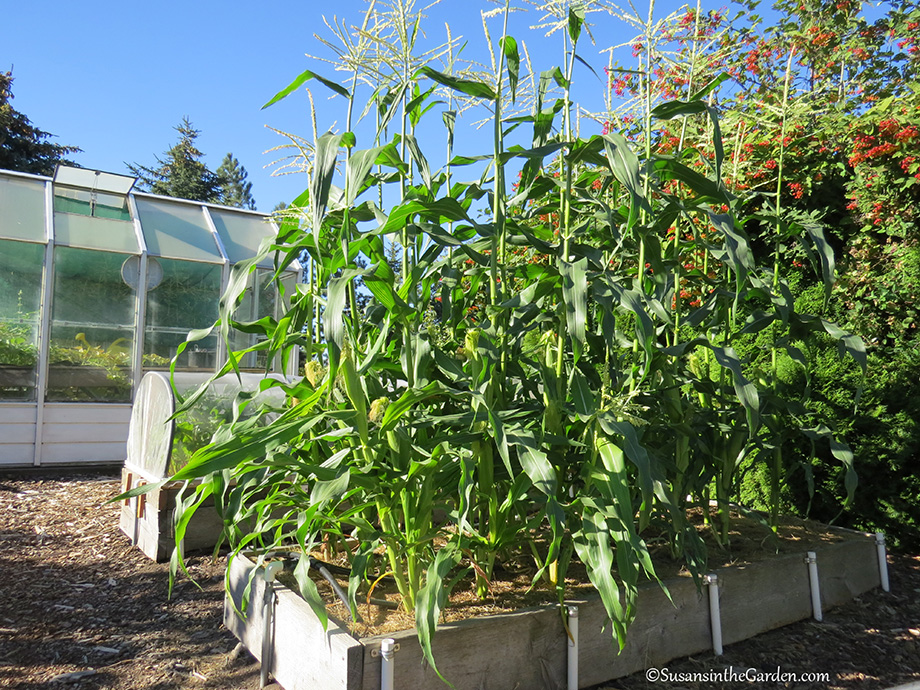Sept. 11 Column: Succession Planting

We all love to get as much produce from our vegetable gardens as possible, right? This season, we’ve been experimenting with succession planting. That’s where you keep your garden beds in production for more of the season. Succession planting is the subject of today’s garden column. You can read it in The Spokesman-Review: Making a succession plan for the garden allows for increased crop variety. Or you can read my column underneath the video below.
If you’re not familiar with the concept, it involves keeping records of when you’ve planted each crop and taking advantage of space around them while they’re developing. Or quickly following a crop with another planting, as soon as the first crop has finished producing. The timing of that can be tricky but I’m determined to hone my skills.
I was inspired to try succession planting this year after reading the book, “Plant Grow Harvest Repeat.” It’s written by Meg McAndrews Cowden and if there’s anyone fully qualified to write about this topic, Meg’s the one! I wrote a review of her book at the end of June, so be sure to check it out.
For my video, I shared my favorite late-season plants that provide color or texture in the garden:
Here’s my garden column about succession planting:
by Susan Mulvihill
I will never look at our vegetable garden the same. For years, my routine has been to plan where to plant each crop, plant them indoors or outdoors at the appropriate time, nurture them during the growing season and enjoy the harvest. And that was that.
After reading Meg McAndrews Cowden’s new book, “Plant Grow Harvest Repeat” (Timber Press, 288 pp., $24.95), I realized that our garden could be producing so much more. The book focuses on the concept of succession planting, which the author is a master at doing. What’s even more impressive is that she lives near Minneapolis, where the hardiness zone is 4a. Most of Spokane is in zone 6a although my garden is in a microclimate where it’s about 5b.
Succession planting involves keeping careful records of when crops grow and produce, and taking advantage of space that is available while a crop is growing or once it has been harvested.
For example, cabbage plants take quite a while to grow and eventually will need a lot of room. Why not sow quick-maturing radishes or turnips in the gaps between the plants while that space is available? I’m growing cabbage as a succession planting to our lettuce crop. I started them indoors and transplanted them once the lettuce started bolting to seed from our hot weather.
Peas are another example. They typically are sown in the spring and will shut down once the summertime temperatures heat up. Bill and I got the crazy notion that we should try planting a second crop of sweet corn in that bed. We planted the corn seeds indoors on July 2 to give them a head start, then transplanted them into the pea bed on July 22 as soon as that crop was finished.
The corn variety, Sweetness Bicolor, takes approximately 68 days to reach maturity so we knew we were pushing the envelope a bit. When you see the “days to maturity” information on a seed packet, that only refers to the time the plants are growing out in the garden, even if you started them indoors from seed ahead of time.
About 2 and a half weeks after we transplanted the corn seedlings, they had already reached 3 feet in height. By Aug. 21, they had tasseled and the silks were getting pollinated. The ears will be ready to harvest in a few more days. I would consider that a roaring success.
Not long after Bill harvested our garlic crop at the end of July, he planted carrot seeds in the bed. They will tolerate our cool fall temperatures and provide us with more goodness from the garden.
Have all of our succession planting experiments gone well? Not exactly. We also thought it might be fun to plant more peas for a fall harvest. The problem is, pea seeds didn’t care for the soil temperature in August, so they didn’t germinate. It was worth a try, though.
My goal is to keep more detailed records of when and where we plant each crop and when they’ve finished producing for the season. That way, I can plan ahead and be able to plug in plantings at the right time to get the most food possible from the garden.
If succession planting will provide us with more to eat during the fall and winter, as well as more produce to donate to the food bank, that’s a win-win.
Susan Mulvihill is author of “The Vegetable Garden Problem Solver Handbook” and “The Vegetable Garden Pest Handbook.” She can be reached at Susan@SusansintheGarden.com. Watch this week’s video at youtube.com/susansinthegarden.

